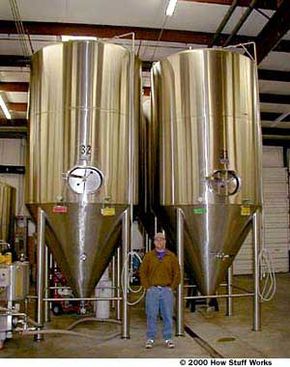Pasteurizing, Fermenting, Carbonating
Pasteurizing
Pasteurization is a compromise. If you boil a food you can kill all bacteria and make the food sterile, but you often significantly affect the taste and nutritional value of the food. When you pasteurize a food (almost always a liquid), what you are doing is heating it to a high enough temperature to kill certain (but not all) bacteria and to disable certain enzymes, and in return you are minimizing the effects on taste as much as you can. Commonly pasteurized foods include milk, ice cream, fruit juices, beer and non-carbonated beverages. Milk, for example, can be pasteurized by heating to 145 degrees F (62.8 degrees C) for half an hour or 163 degrees F (72.8 degrees C) for 15 seconds.
Ultra high temperature (UHT) pasteurization completely sterilizes the product. It is used to created "boxes of milk" that you see on the shelf at the grocery store. In UHT pasteurization, the temperature of the milk is raised to about 285 degrees F (141 degrees C) for one or two seconds, sterilizing the milk.
Advertisement
Fermenting
Fermentation uses yeast (see How Bread Works for more information on yeast) to produce alcohol. Alcohol is a good preservative because it kills bacteria. When you ferment grape juice you create wine, which will last quite a long time (decades if necessary) without refrigeration. Normal grape juice would mold in days.
Carbonating
Carbonated water is water in which carbon dioxide gas has been dissolved under pressure. By eliminating oxygen, carbonated water inhibits bacterial growth. Carbonated beverages (soft drinks) therefore contain a natural preservative.
